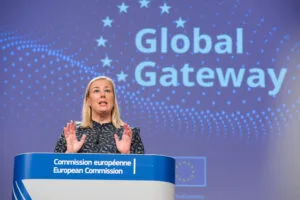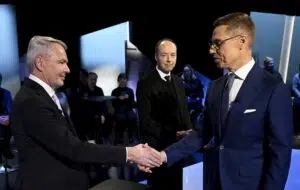Brussels – Everything went as expected in the first round of the presidential elections in Finland. For European Commissioner for International Partnerships Jutta Urpilainen, candidate of the Social Democratic Party, it went even worse than expected on the eve of the vote. The February 11 runoff will feature the center-right candidate, Alexander Stubb, and the Green Party candidate, Pekka Haavisto, with the challenge wide open given both the results of the first round and the distribution of voter preferences who chose for the other seven candidates in the running yesterday (January 28) instead.

With a record turnout of 71.5 percent (66.8 percent in the previous 2018 presidential election), the definitive results indicate a first-round victory for the center-right National Coalition Party candidate with 27.2 percent of the vote, followed closely by the Green League with 25.8. The far-right candidate of the True Finns, Jussi Halla-Aho, was in third place at a distant 19 percent, the Keskusta Liberal-backed independent Olli Rehn (former commissioner from 2004 to 2014) in fourth place with 15 percent, the true débâcle for Social Democrat Urpilainen, in sixth place (4.3 percent) behind even the Left Alliance candidate, Li Andersson (4.9).
“I didn’t have much choice. The European Commission has very strict rules for commissioners’ election campaigns,” Urpilainen said after the election. “It was worth it. I am happy to resume my role as commissioner, the work continues,” she said on X. Since December 2, the head for International Partnerships had been on unpaid leave after the decision to accept her party’s bid for her to run as a future president of the Republic.
“The competition only starts now,” Stubb warned, beginning his campaign ahead of the runoff just minutes after the first-round results announcement. “Our task now is to reach out to the voters whose candidates did not make it to the second round,” Haavisto said. Both candidates have a strong foreign policy background: Stubb was foreign minister between 2008 and 2011 and former prime minister between 2014 and 2015, while Haavisto was minister for international development between 2013 and 2014 and foreign minister in the government led by Sanna Marin between 2019 and 2023.

From left: Green League candidate, Pekka Haavisto, and National Coalition Party candidate, Alexander Stubb (credits: Vesa Moilanen / Lehtikuva / Afp)
The main role of the President of Finland is to guide the country’s foreign policy in cooperation with the government, representing Helsinki in NATO after the historic entry on April 4, 2023. The President of the Republic also acts as commander-in-chief, appoints and accepts resignations of members of the executive branch, high-ranking civil servants, and Supreme Court judges. Finally, at the justified request of the prime minister, he can order the dissolution of the Eduskunta (Finland’s single-chamber parliament) and call early elections. The current President, Sauli Niinistö (in office since 2012), is still particularly well-liked in the country. A 1994 constitutional rule provides that the President’s term cannot be renewed after two consecutive terms, each lasting six years.
English version by the Translation Service of Withub





